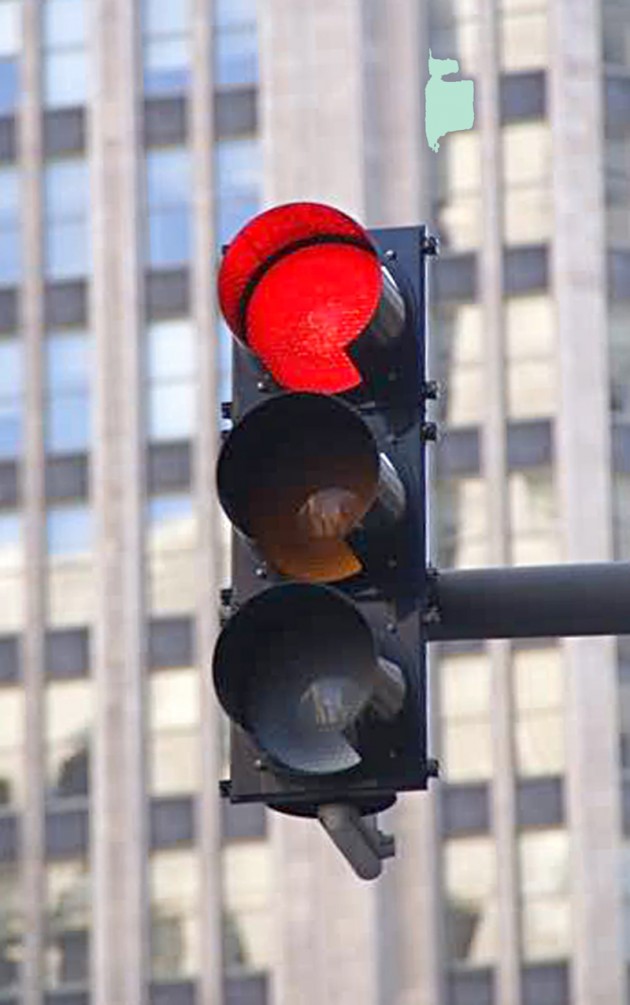Red-light cameras not quite illegal

At first, it sounds like a paradox: Red-light cameras have been installed at intersections around USF to catch people who run lights, but it’s against state law to use the cameras to enforce traffic violations.
Though Florida law states that these red-light cameras are illegal in some situations, the Temple Terrace Police Department hasn’t done any anything wrong, said department spokesman Michael Dunn.
“(Running a red light) is not a traffic violation, it is a city ordinance violation,” he said.
A report issued by Deputy State Traffic Operations Officer Mark C. Wilson on Nov. 27 said that “current Florida Law does not allow the use of red-light running Cameras for the enforcement of a traffic violation. The Florida Department of Transportation does not allow the use of red-light running cameras on any of our intersections on the State Highway System.”
Dunn said the red-light cameras aren’t a problem, however, because the report stated that cameras cannot be put on Florida Department of Transportation property — a rule the police department has followed.
“If it was illegal, we wouldn’t put them up,” he said.
In February, the Temple Terrace City Council passed an ordinance that allowed the installation of red-light cameras in Temple Terrace.
Nine months later, the cameras are spread out across nine locations, including Fowler Avenue and 56th Street, Fowler Avenue and Riverhills Drive, and 56th Street and Bullard Parkway.
American Traffic Solutions, an Arizona-based company that provides photo-traffic safety and electronic-toll enforcement programs, installed the cameras.
The cameras catch unsuspecting drivers in the act of running a red light. They are designed to take two digital photos and record digital video of the offense, according to templeterrace.com.
The Temple Terrace Police Department reviews and confirms the violation and sends the vehicle owner a “Notice of Violation,” or a fine. There is a $100 fine for the first offense, and the cost escalates for each additional offense.
Dunn said they mail the notices because the police department doesn’t have enough staff to sit at an intersection and pull people over, adding that it is very difficult to catch someone who just ran a red light.
“You basically need two cars: One to see where the person enters the intersection and another car to be positioned so that you can see where the person passed the light,” he said. “Then the car has to zoom out and catch that car in heavy traffic, and that is very dangerous.”
Some students said the Temple Terrace police should employ other methods of ticket delivery.
Some students who live on campus don’t check their mail because they use their parents’ home addresses as their primary mailing addresses and don’t expect to receive anything at their campus mailboxes.
“People that don’t check their mail are going to be fined for not paying their ticket when they didn’t even know they got a ticket in the first place,” freshman Daniel Robinson said.
The computer engineering major said he never checks his mail, and “probably has a ticket in the mail right now.”
Robinson said he thought that if he did get a ticket, he would have to pay it no matter what, but that is not the case.
Students can appeal the ticket by requesting a hearing in writing. The appeal needs to be mailed by the date specified on the Notice of Violation. If the appeal is won, the person doesn’t have to pay the fine. If the person is found liable, he or she must pay $50 for court costs on top of the fine within 15 days of the hearing.
“I think the cops should show up at your door and give the notice to you in person,” said biomedical science sophomore John Williams. “Either that or they should pull you over.”
Williams said the mailing system cannot be relied upon for something like giving out notices, and that many things can happen after the letter gets to the mailbox, such as a roommate throwing it out.
According to the Temple Terrace City Council, the installation of red-light cameras ensures safer driving.
The council pointed out a Philadelphia report, which stated that signal violations at intersections with red-light cameras dropped 96 percent after one year of operation.
The report is not uncontested, however. Last March, the USF College of Public Health said red-light cameras increase the likelihood of car crashes.
Other states have a similar point of view, as the Virginia Transportation Research Council found that crashes at intersections with the cameras increased by 29 percent.
Director of Communications and Public Affairs for American Traffic Solutions Josh Weiss refutes USF’s findings.
“The report’s findings are also the exact opposite of what our clients nationally have experienced,” he wrote in a statement. “We place no credibility in this obviously biased study. We have more faith in the chiefs of police and traffic professionals than a disgruntled academician who clearly has some ax to grind.”







